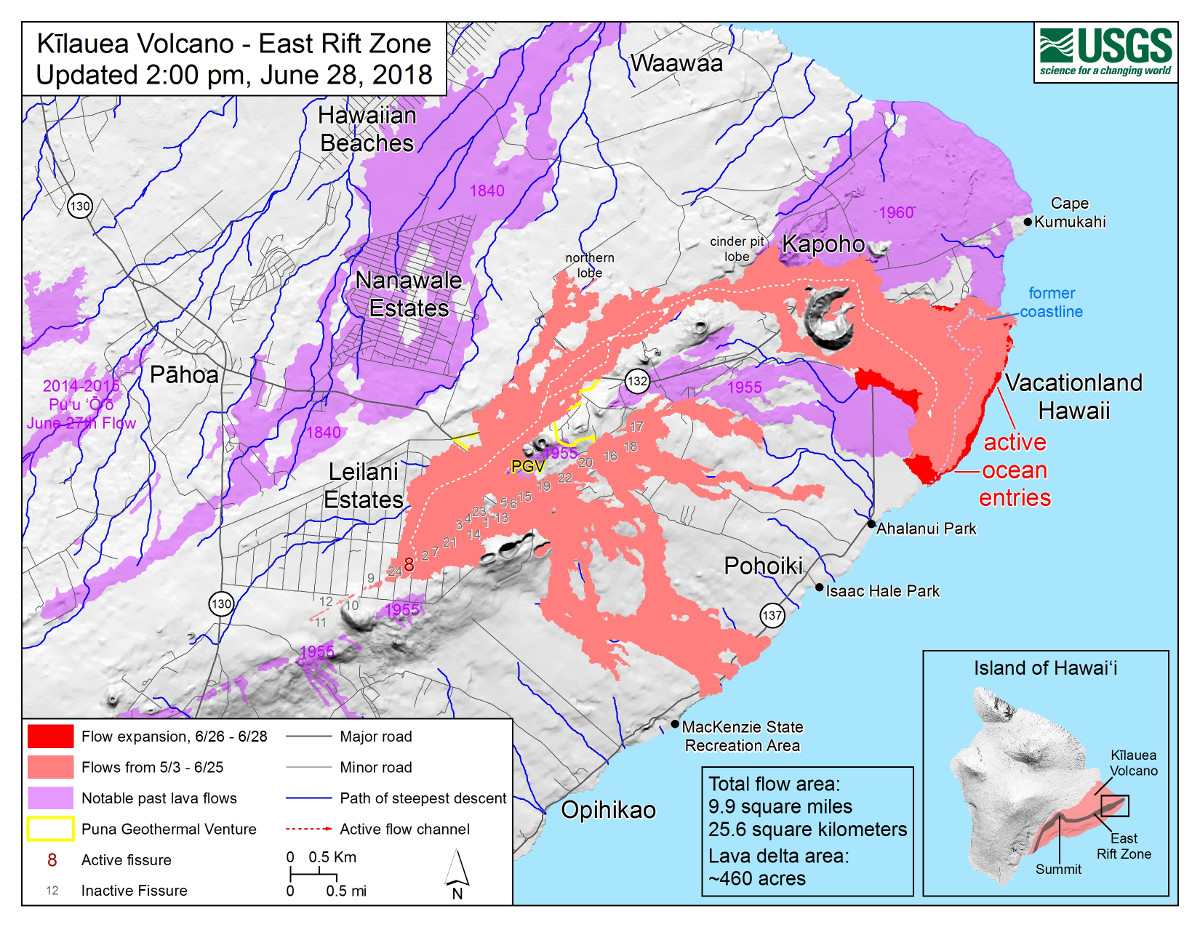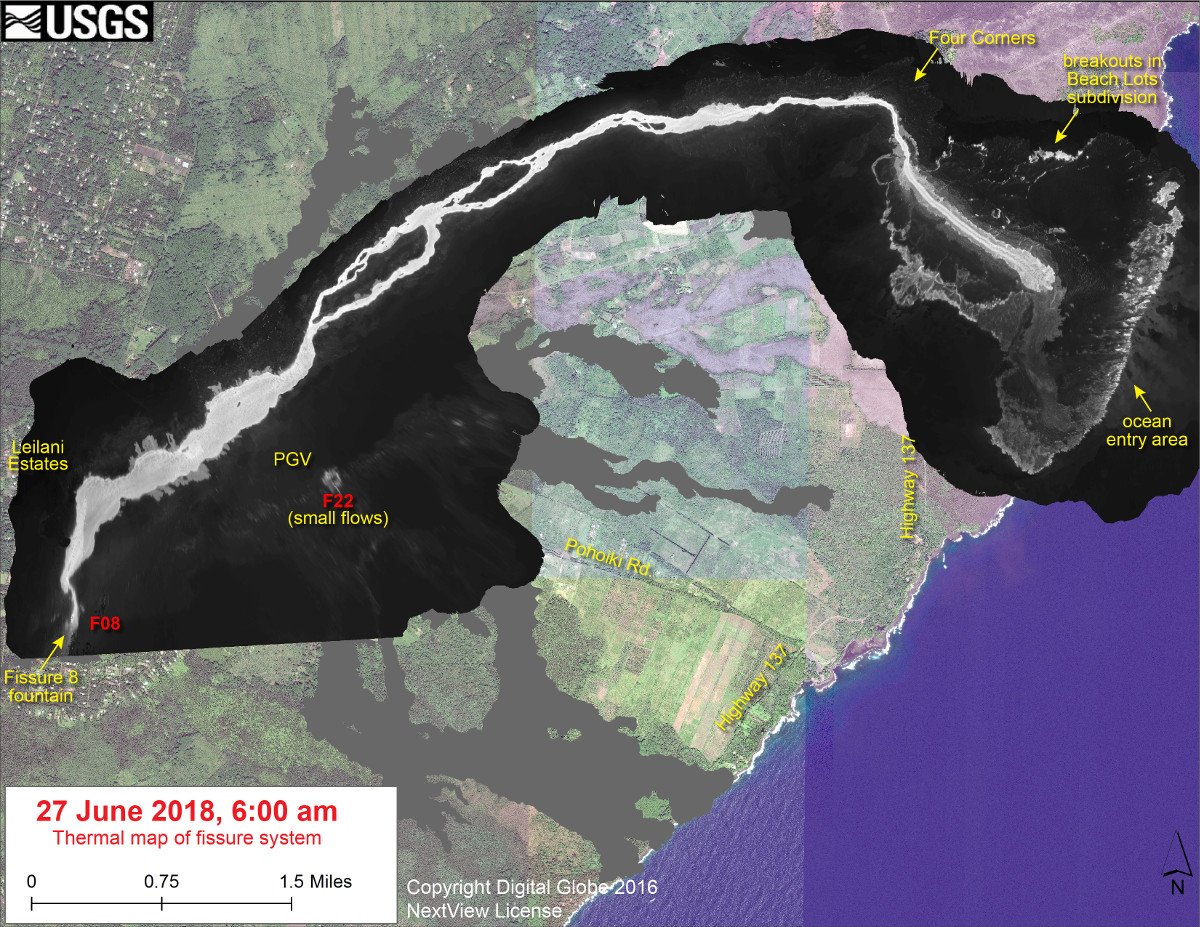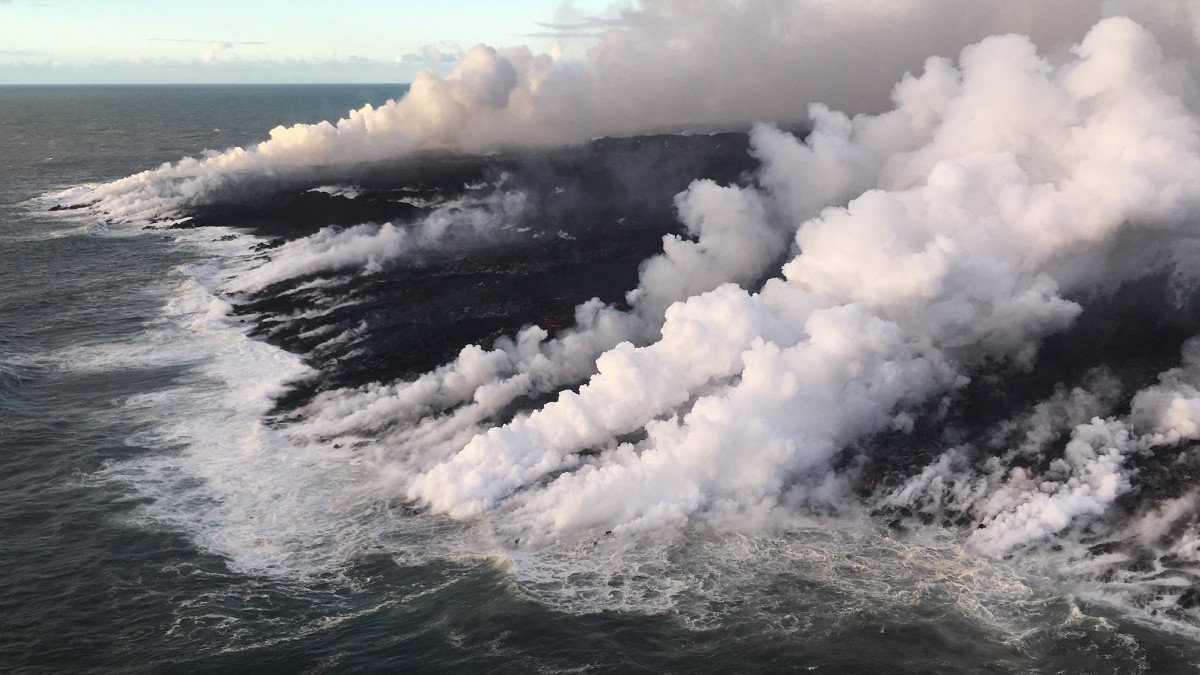
USGS: Map as of 2:00 p.m. HST, June 28, 2018. Given the dynamic nature of Kīlauea’s lower East Rift Zone eruption, with changing vent locations, fissures starting and stopping, and varying rates of lava effusion, map details shown here are accurate as of the date/time noted. Shaded purple areas indicate lava flows erupted in 1840, 1955, 1960, and 2014-2015.
(BIVN) – Two structures have been destroyed in Kapoho in the past 24 hours, officials say, as the Fissure 8 lava channel continues to enter the ocean over a broad area.
For the past few days, the flow has been oozing fresh lava at Kapoho Beach Lots. “Due to active lava near houses in Kapoho, access by residents is not allowed,” emergency officials said.
A few burning areas were observed on the south side of the flow and west of highway 137, scientists with the USGS Hawaiian Volcano Observatory said this morning.
“Lava was entering the sea over a broad area this morning primarily on the northern side of the entry area,” USGS wrote. “As shown by yesterday’s thermal map of the flow field, the lava channel has crusted over about 0.8 km (0.5 mi) inland of the ocean entry; lava is moving beneath the crust and into still-molten interior of earlier flows before it enters the sea.”

USGS: This thermal map shows the fissure system and lava flows as of 6 am on Wednesday, June 27. The fountain at Fissure 8 remains active, with the lava flow entering the ocean at Kapoho. Small breakouts were observed this morning in the area of Kapoho Beach Lots. Very small, short flows were observed today near Fissure 22. The black and white area is the extent of the thermal map. Temperature in the thermal image is displayed as gray-scale values, with the brightest pixels indicating the hottest areas. The thermal map was constructed by stitching many overlapping oblique thermal images collected by a handheld thermal camera during a helicopter overflight of the flow field. The base is a copyrighted color satellite image (used with permission) provided by Digital Globe
Gas emissions from the fissure eruption and laze at the ocean entry continue to be very high. The National Weather Service reports trade winds will reduce and VOG levels may increase in affected areas.
At the Kīlauea Volcano Summit, USGS observed:
At 07:51 AM HST, after approximately 15 hours of elevated seismicity, a collapse explosion occurred at the summit producing an ash-poor steam plume that rose about 500 ft above the ground surface (~4,500 ft above sea level) before drifting to the SW. The energy released by the event was equivalent to a magnitude 5.2 earthquake. Seismicity dropped abruptly from a high of 30-35 earthquakes per hour (many in the magnitude 2-3 range) prior to the collapse explosion down to 10 or fewer earthquakes per hour afterwards. Inward slumping of the rim and walls of Halemaʻumaʻu continues in response to ongoing subsidence at the summit.
Due to frequent earthquakes, residents in the Volcano area are advised to monitor utility connections of gas, electricity, and water after earthquakes, county officials say.
County officials say disaster assistance is available island-wide to individuals and businesses in Hawaii County that have been affected by the Kilauea eruption.
- You can register for disaster assistance with Federal Emergency Management Agency (FEMA) in-person by visiting the Disaster Recovery Center, by calling 1-800-621-3362, or online at disasterassistance.gov
- The Disaster Recovery Center is open daily from 8am to 8pm, and is located at the Keaau High School Gym. If you need a ride, buses operate between the two shelters and the Disaster Recovery Center between 7:30 am and 9:00 pm.
- For more resources to help you recover from this disaster, please visit the county website.


by Big Island Video News7:05 pm
on at
STORY SUMMARY
HAWAII ISLAND - A few burning areas were observed on the south side of the flow and west of highway 137, scientists with the USGS Hawaiian Volcano Observatory said this morning.